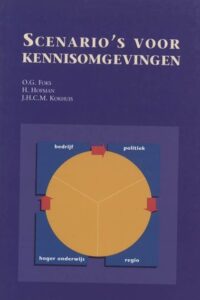From Scientometric Systems
to Co-Creative Societies:
The Evolution of Leydesdorff’s Approach from the Triple to the Quadruple Helix
- Origins: Knowledge Communication and Scientometric Modelling
Loet Leydesdorff’s early work in the 1980s and 1990s focused on the communication structures of science rather than on individual scientists or organisations. Influenced by Niklas Luhmann’s systems theory, he conceived scientific communication as an autopoietic subsystem of society that reproduces itself through publications and citations.
His methodological core was scientometrics: the quantitative analysis of communication flows in publications, citation networks and patent data. By applying information-theoretical measures such as entropy and mutual information, Leydesdorff demonstrated that patterns of co-citation and co-authorship could be interpreted as indicators of self-organisation within scientific knowledge systems.
In this first phase, innovation was understood as the outcome of communication among institutional spheres. Universities generate codified knowledge, industries transform it into technologies and products, and governments regulate and fund the process. The emphasis lay on macro-level network analysis—a systemic view of how knowledge flows rather than how individuals interact.
These works established the methodological foundation for the next conceptual leap: the Triple Helix model.
- The Triple Helix: Institutional Co-evolution of University, Industry, and Government
Together with Henry Etzkowitz, Leydesdorff formulated the Triple Helix of University–Industry–Government relations (Etzkowitz & Leydesdorff 1995, 2000). The model proposed that innovation arises from overlapping institutional spheres that both collaborate and compete. Rather than a linear model of science-push or demand-pull, the Triple Helix depicts a recursive dynamic of communication, negotiation and hybridisation between the three helices.
Methodologically, Leydesdorff extended his scientometric tools to this multi-institutional setting. He measured the degree of interaction among universities, firms and governments using co-authorship patterns, patent data and webometric analyses. In doing so, he shifted from describing the internal logic of science to analysing innovation systems as evolving networks of communication.
This framework became widely adopted in regional innovation studies and EU policy discourse. However, as the knowledge economy globalised, questions emerged about legitimacy, cultural context and public understanding of innovation—dimensions that the Triple Helix did not yet address.
- Toward a Media-Based Quadruple Helix
Around 2009, in collaboration with Elias G. Carayannis, Leydesdorff contributed to extending the model into what became the Quadruple Helix of innovation.
The central argument of Carayannis & Campbell (2009, 2012) was that knowledge production in the 21st century is not confined to science, industry and government. A fourth helix—the media-based public or civil society—plays a decisive role in shaping innovation by forming perceptions, values and legitimacy.
In this media-based democracy, communication through traditional and digital media connects scientific and political discourses with societal opinion. The public sphere, understood in Habermasian terms, functions as a reflexive mirror that can accelerate or obstruct technological innovation depending on how narratives circulate.
This stage thus reinterprets Leydesdorff’s communication systems at a broader societal scale. Where the Triple Helix analysed citation networks within science, the Quadruple Helix analyses information flows across all societal subsystems. Publications, patents, and news articles become nodes in a wider “knowledge ecology.”
The “media-based” extension was conceptually powerful for macro-level analysis—linking innovation, democracy and culture—but less operational for local contexts. It inspired research on how media framing and public perception affect technology adoption (e.g., in energy transitions or biotechnology).
Yet it treated the public mainly as an audience rather than a co-producer of innovation.
- From Media Systems to Civil-Society Co-Creation
After 2015, European researchers (Blok, Wesselink, Popa, Nordberg, and the EU-funded RiConfigure project) sought to make the fourth helix more interactive and participatory. They reframed it from “media-based democracy” to “civil society co-creation.”
In this view, the public is not a passive recipient of innovation discourse but an active partner in experimentation—for example in living labs, citizen science and participatory energy projects.
Methodologically, this shift corresponded to a move from scientometrics to action research and qualitative evaluation. The knowledge of citizens, NGOs and local entrepreneurs was recognised as contextual expertise that complements scientific knowledge. Innovation thus became both a technical and a social learning process.
The object of study changed accordingly: from national innovation systems to regional and community-based ecosystems, such as local energy initiatives or urban living labs.
The metric of success also shifted—from publication output and R&D investment to social impact, inclusion and trust.












